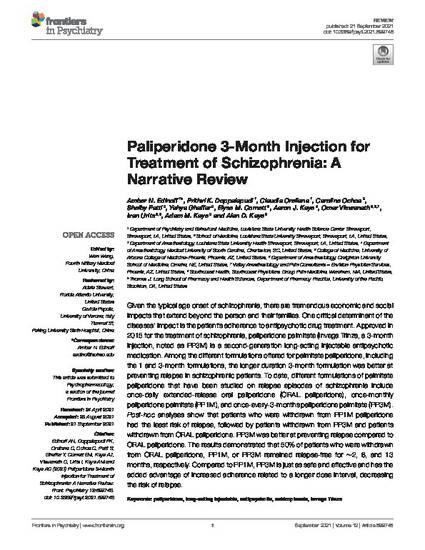
Given the typical age onset of schizophrenia, there are tremendous economic and social impacts that extend beyond the person and their families. One critical determinant of the diseases' impact is the patient's adherence to antipsychotic drug treatment. Approved in 2015 for the treatment of schizophrenia, paliperidone palmitate (Invega Trinza, a 3-month injection, noted as PP3M) is a second-generation long-acting injectable antipsychotic medication. Among the different formulations offered for palmitate paliperidone, including the 1 and 3-month formulations, the longer duration 3-month formulation was better at preventing relapse in schizophrenic patients. To date, different formulations of palmitate paliperidone that have been studied on relapse episodes of schizophrenia include once-daily extended-release oral paliperidone (ORAL paliperidone), once-monthly paliperidone palmitate (PP1M), and once-every-3-months paliperidone palmitate (PP3M). Post-hoc analyses show that patients who were withdrawn from PP1M paliperidone had the least risk of relapse, followed by patients withdrawn from PP3M and patients withdrawn from ORAL paliperidone. PP3M was better at preventing relapse compared to ORAL paliperidone. The results demonstrated that 50% of patients who were withdrawn from ORAL paliperidone, PP1M, or PP3M remained relapse-free for ~2, 6, and 13 months, respectively. Compared to PP1M, PP3M is just as safe and effective and has the added advantage of increased adherence related to a longer dose interval, decreasing the risk of relapse.
Available at: http://works.bepress.com/adam-kaye/179/
